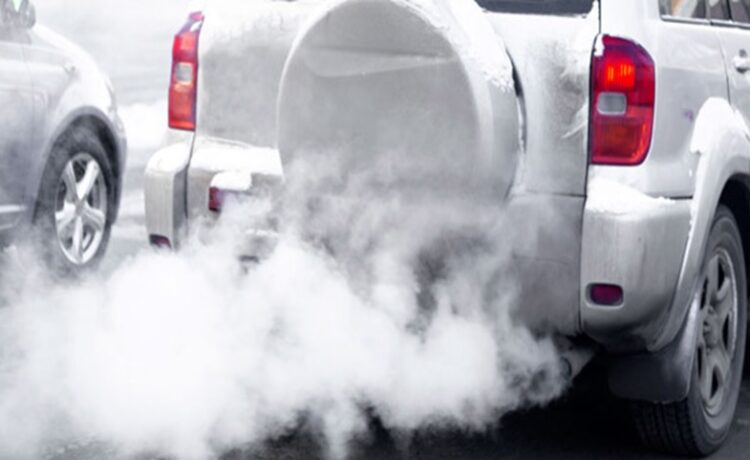A high compression ratio, modern power systems, small gaps in the friction pairs of the engine, catalysts, and particulate filters made the engines, if not environmentally friendly, then at least smokeless. A fair amount of harmful emissions still fly out of any motor, but they are not visible.
Even in a diesel engine, smoking is a sign of a malfunction, and in some cases, it is more beneficial to sell a truck than repair it. The Indy Auto Man mechanics explain why the engines sometimes smoke and what a car owner can do about it.
When The Smoke Is Not a Problem
In most cases, the evaporation is not the actual smoke but the steam from the muffler. In winter, a cold engine can soar very intensively – a lot of moisture accumulates in the exhaust system overnight. Heated by exhaust gases, it evaporates vigorously, leaving a cloud of steam behind the car. The difference between vapor and white smoke is that water vapor will disappear within a few minutes, while white smoke will not dissipate as quickly. The locomotive plume of a serviceable engine will disappear as the muffler warms up, and only in frosts below 20 degrees can it briefly appear during regassing.
White Smoke
The white smoke from the engine means that engine oil or antifreeze burns out in the cylinders. This should not happen under any circumstances, and if a car with a fully warmed-up engine still leaves a white trail behind it, it is urgent to find out what is on fire and how it gets inside the cylinder.
In 99% of cases, antifreeze gets the path to the engine through a burnt head gasket. Alas, sometimes this happens even on the most advanced and reliable motors, it is enough to overheat it well once. Determining the defect is simple – сheck the coolant level before the first start-up while the engine is cold. There is another sign – seething and bubbles in the expansion tank of a warm motor. There is only one recipe for this issue elimination – replace the gasket and check the adjacent planes for curvature. Very rarely, there may be cracks in the block or head. It is much more complicated to diagnose, and one cannot do without complete crimping in a service center.
The oil burning in the cylinders has more paths. These are worn rings, valve stem seals, and even cracks in the pistons. Such a motor inevitably consumes more oil, which has to be constantly topped up. The problem is eliminated only by appropriate repairs, and it is possible to distinguish “oily” smoke from “antifreeze” by its shade – the latter is not pure white but with bluish notes.
Black Smoke
Thick gray or black smoke is an excess of fuel that cannot be completely burned. A smoking gasoline engine emits harmful clouds when working at power levels – a driver can notice gray smoke during acceleration in the rearview mirror. In this case, it is necessary to check the power supply system of the motor, but often the cause is a clogged filter.
The same is true for diesel engines, but the smoke will be black. If the greater the load provokes more smoke, the reason may be in the fuel equipment – a misaligned fuel pump or worn injectors. Alas, here you can’t do without hardware diagnostics. The only consolation is that smoking diesel can work for quite a long time without causing much trouble to the owner. However, it is worth tuning it to guarantee a reliable winter start and start by checking the air filter.
There are still quite extravagant smokes from getting brake fluid into the engine or oil from the turbine and cooler, but it is better to address a professional service center to diagnose these issues. However, the driver can reveal the problem on his own if it is all about catalysts. They, too, are capable of emitting smoke in some modes and often do so on purpose. So, in the forced soot removal mode, a practically serviceable catalyst can leave a white, unpleasantly smelling trail behind the car during acceleration. But only once, and the next time it overclocks, this will not happen again. The vehicle can even be equipped with a button for forced catalyst cleaning. It should be used with a well-heated engine, preferably on the highway and at a decent speed.
In addition, the cause of the smoke in the car may not be directly related to the malfunction, but caused, for example, by a plastic bag stuck to the heated catalyst, accidentally picked up along the way. When burned, it can put up a smoke screen, but this is usually not dangerous and will end after the complete combustion of the plastic. Sometimes dry grass is stuffed under the bottom, which when in contact with the same catalyst, can flare up and even set fire to the car. Therefore, when moving across a field or meadow with tall grass, see if a trail of flaring-up troubles is winding behind you.
And finally, the smoke from jammed brake pads, after a downtime of the car, indicates a malfunction of the brakes. But here, comments are superfluous – it is urgent to address servicemen.





